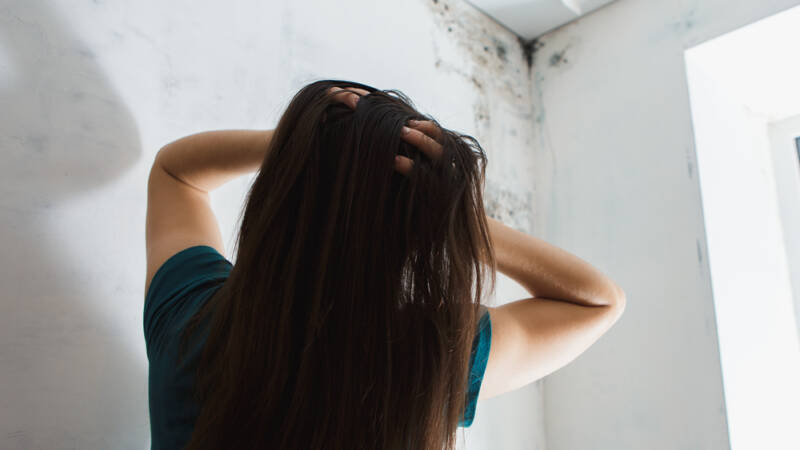How To Spot Mold In Your Home And What To Do About

What comes in a variety of colors and textures, loves to travel, and sometimes makes you sick? If you said mold, then you’re correct.
We can live harmoniously with this naturally occurring fungus in our outdoor environments. But when mold gets into our homes, not only does it smell and look bad, it can also lead to a variety of illnesses. Here is what you need to know to keep you and your home safe and free from mold and what to do if you find it.
How Mold Appears in Your Home
Mold releases tiny spores that float through the air, making their way into your home. It grows where there is moisture or dampness and is commonly found in walls, floors, appliances and carpets. Bathrooms, basements, kitchens and laundry rooms often provide the perfect environment for it to grow.
You may smell it first. Or you might first see small spots. Mold can be black or dark, but may be any color. It can look fuzzy, furry, smooth or a bit powdery.
If you are not certain that it is mold, ask yourself these questions:
- Does it smell musty?
- Is it in a damp or moist area?
- Does dabbing a tiny bit of bleach on it make its color fade within a few minutes?
If you answer yes to any of these questions, there is a good chance it’s mold, and you will need to get rid of it. Some molds are quite harmless and can be wiped away with a spray from your local hardware store. Others require a professional to deal with it safely and effectively.
Common Household Molds
Household molds love to live in dark, damp places with the temperature between 60 and 80 degrees
Fahrenheit. There are about 12 different household types, but the three most common are:
- Aspergillus, which has over 185 species and comes in many colors.
- Cladosporium is a green or brown mold that can thrive in both warm and cold climates. It particularly likes to live in furniture upholstery and carpets.
- Penicillium is velvety blue and spreads very quickly.
Health Effects
Some people are extremely sensitive to mold. But even people who aren’t can suffer from eye, throat, nose, skin, and lung irritation from it. Sneezing, runny nose, red and itchy eyes, headache, itchiness, fatigue, nosebleeds and general respiratory issues are all common symptoms from exposure to mold in the home.
For those who have asthma or allergies, the situation can become serious. Household mold can cause shortness of breath, asthma attacks and worsen respiratory functioning.
Others who may be more sensitive to mold include children, the elderly and anyone with lung disease. Those whose immune systems are compromised are also at greater risk of suffering from mold-related health issues.
Ridding your home of mold is critical to the health of every occupant, including pets. If you have the slightest suspicion that there is mold in your house, take the necessary steps to have it identified and removed.
What To Do If You Find Mold
It is important to do two things right away when you find mold. First, it needs to be removed. You can try an at-home remedy, especially if it’s a small amount of mold. Alternatively, search online to find a qualified professional mold remediation company near you to remove the mold safely. Before signing a contract, be sure they have liability insurance, will provide you a copy of the cleanup protocol and a written work guarantee. Be wary of businesses who claim they “seal” of “encapsulate” mold, as this means they will just cover it up.
Then, lower the amount of moisture and humidity in your house to prevent the mold from returning. The Center for Disease Control recommends keeping humidity between 30 and 50 percent.
Mold is harmless outdoors. But when it grows indoors, it can damage your home and health. Knowing how to prevent it can help keep you safe and healthy. If you find it in your home, take the appropriate measures to remove it as soon as possible. Then take the necessary steps to prevent it from coming back.